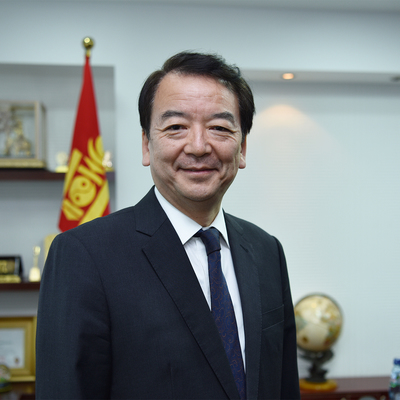Established in 1995, Golomt bank pioneered the development of the Mongolian financial system with innovative and technologically advanced products and services. They have taken the lead in developing new product offerings in Mongolia, including the first mortgage scheme and the first SME development centers
Due to its dynamic growth, the bank became the second largest by total customer deposits. Golomt Bank is active in three segments: Corporate, Retail and SME banking. Golomt Bank is the leader in SME financing and is the largest urban-retail bank. With over 100 branches throughout Mongolia, Golomt Bank focusses on offering its clients tailored products and provides tech services such as: mobile banking and portable ATMs.
Mr. Kato has extensive banking experience for over 30 years. He started his career at Bank of Tokyo (current MUFG Bank), and took various positions in Tokyo, New York, Amsterdam and Bahrain in corporate banking, HR, planning, regional management and subsidiary-bank management. Moreover, he has tremendous experience in Mongolian banking sector, having served as a senior advisor, Acting CEO and CEO of Khan Bank for five years during the period from 2009 to 2016 and also served as a Vice President of Mongolian Bankers Association. Prior to joining Golomt Bank, Mr. Kato worked as CEO of Sathapana Bank in Cambodia and transformed the bank into one of the leading banks in Cambodia with latest digital banking services.

Information Générale
| Emprunteur | Golomt Bank |
| Pays | Mongolie |
| Siège social | Ulaanbaatar |
| Website | https://www.golomtbank.com/en |
| Financé | 1 Janvier 1995 |
| Actif sur Lendahand depuis | 30 Octobre 2017 |
Informations financières au 2021-06-30
| Aperçu du portefeuille | €973 745 713,68 |
| Ratio de levier | 7,45% |
| Ratio d'abandon de créances des 12 derniers mois | 1,39% |
| % montant de l'investissement en retard (>90 jours) | 6,66% |
A propos de Mongolie
Mongolia implemented democratic reforms in 1990, including a new constitution. The people of Mongolia chose a parliamentary democracy with a free market economy. During the Soviet time the economy of Mongolia was mainly driven by the agricultural sector. However after becoming independent it discovered its richness in resources and minerals - namely gold, copper, uranium and coal. Because the Mongolian economy is quite dependent on mining the government is actively stimulating other sectors to diversify the economy.
Dernier projet financé

Davaasambuu 2
With a second loan of EUR 32,000 Davaasambuu will be able to purchase goods for his new supermarket branch in Ulaangom.
